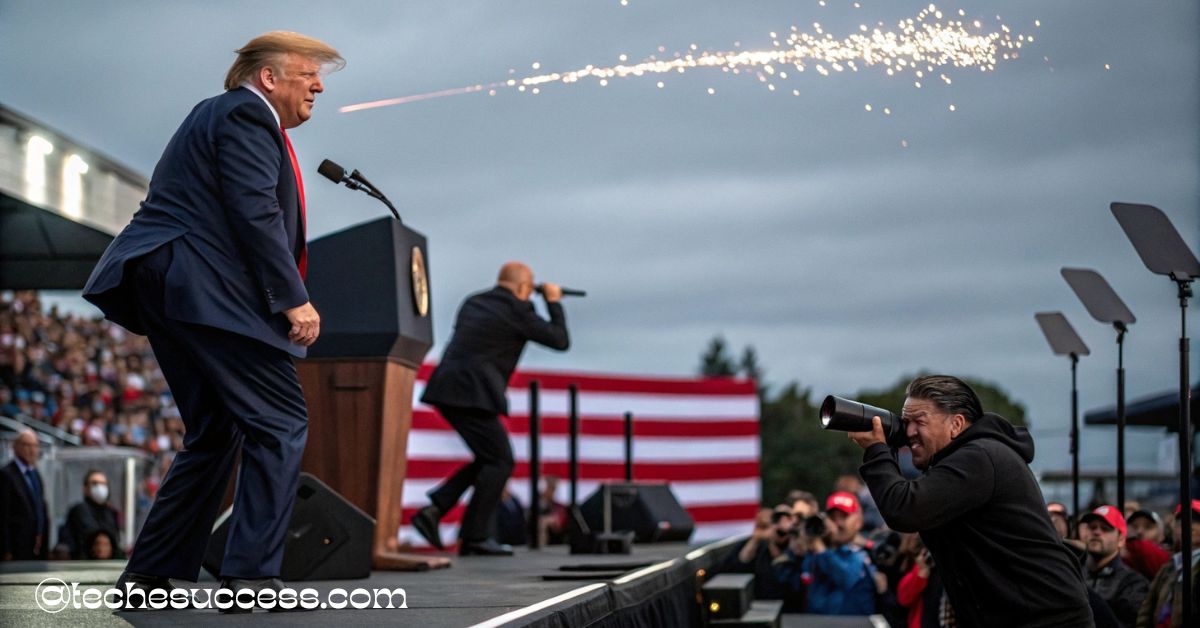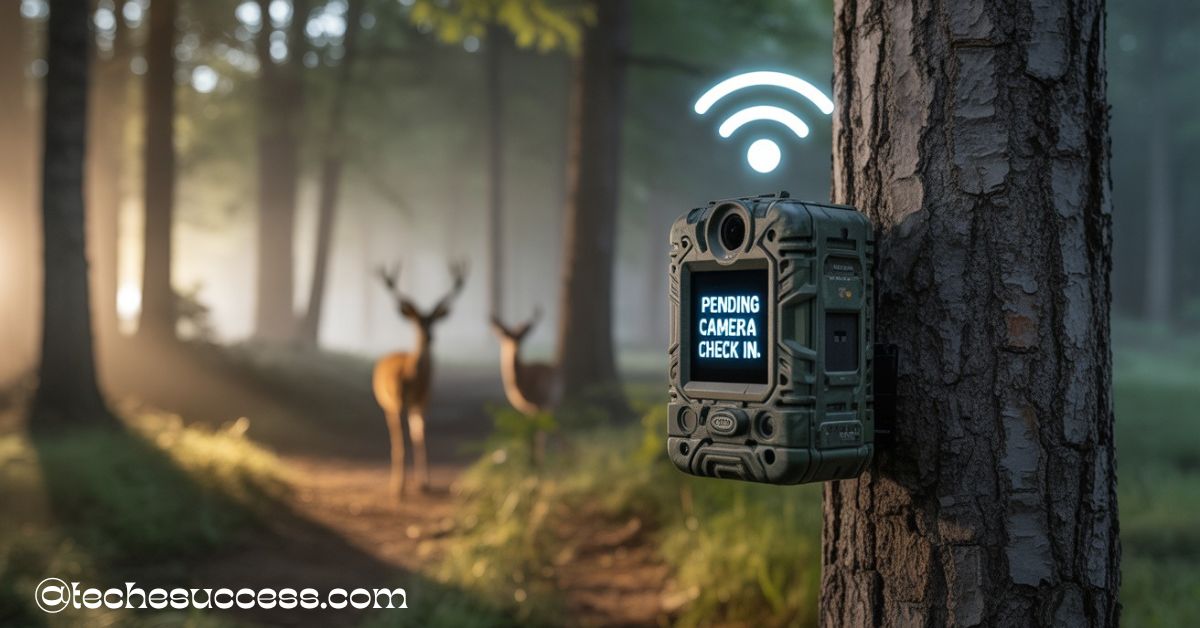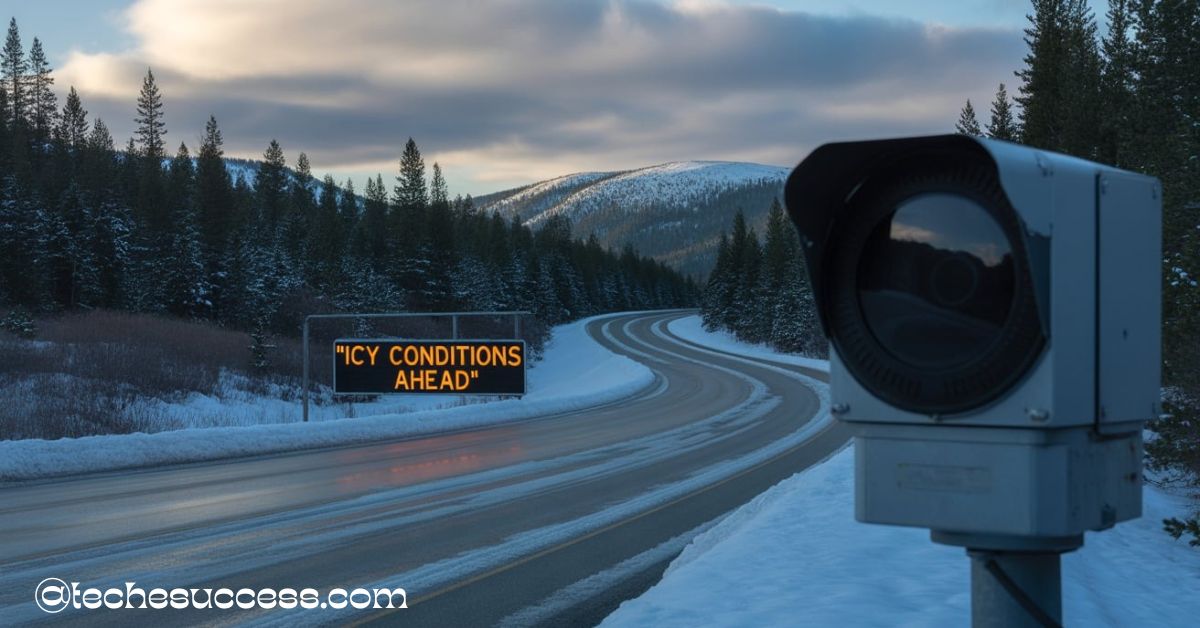A 22fps camera caugt bullkt that went by trumps head during a rally, capturing a once-in-a-lifetime image as the bullet narrowly missed him. The stunning frame, taken by a New York Times photographer using a Sony A1, shows the bullet’s trail mid-air. This rare photo quickly went viral, highlighting the power of high-speed photography.
Stay tuned with us as we dive deeper into the incredible moment when a22fps camera caugt bullkt that went by trumps head — a rare, history-making shot captured in real time.
Introduction: When a “22fps camera caugt bullkt that went by trumps head”
In one of the most chilling and iconic moments in modern political history, a photograph captured the exact second a bullet narrowly missed former President Donald Trump’s head during a campaign rally in Pennsylvania. The image, taken by New York Times photographer Doug Mills, shows the bullet’s trail as it slices through the air just inches away from Trump, who is seen reaching toward his bleeding right ear. The photo has since gone viral, becoming a defining image of the attempted assassination and raising global curiosity about how such a shot was even possible. The phrase “22fps camera caugt bullkt that went by trumps head” quickly became a trending topic online, as people marveled at the timing, technology, and sheer luck involved in capturing such a moment.
This article explores the incident in full, delving into the rally attack, the photographer’s role, the camera technology involved, expert analysis of the image, and the broader implications for media, security, and history. In an age where visual evidence defines narratives, this photograph serves as a powerful reminder of both the dangers faced by public figures and the power of professional journalism.
The Rally Shooting: Bullet Grazing Trump’s Ear
On July 13, 2024, at a campaign rally in Butler, Pennsylvania, Donald Trump took the stage to address his supporters. Just moments into his speech, gunfire erupted. The crowd scattered in panic as Secret Service agents rushed to protect the former president. Trump staggered back, clutching his right ear, which was visibly bleeding. It was immediately clear that an assassination attempt had occurred.
Authorities later confirmed that a bullet grazed Trump’s ear, missing his skull by mere inches. The assailant, identified as 20-year-old Thomas Matthew Crooks, had positioned himself on a nearby rooftop and opened fire with a semi-automatic rifle. He was ultimately neutralized by Secret Service snipers, but not before injuring two bystanders and causing widespread panic.
Despite the life-threatening nature of the incident, Trump stood up moments later and raised his fist defiantly, an act that quickly became symbolic. The dramatic scene played out live on various news platforms, but it was a still image—the now-famous frame showing the bullet streaking past Trump’s head—that would soon dominate global headlines. That image gave visual weight to the phrase, “22fps camera caugt bullkt that went by trumps head.”
Doug Mills’ Iconic Frame
Doug Mills, a veteran photojournalist with The New York Times, had covered every U.S. president since Ronald Reagan. On the day of the rally, Mills was using a high-end Sony A1 mirrorless camera. Positioned at the front of the crowd, he aimed his lens at Trump just as the chaos began.
Unaware of the gunman’s presence, Mills instinctively kept shooting in high-speed burst mode. Later, while reviewing the images, he noticed something extraordinary: one frame captured a thin white streak just inches from Trump’s head. Upon closer examination, experts and image analysts confirmed it was a bullet or a shockwave created by a bullet.
The image spread like wildfire on social media, major news sites, and television broadcasts. It was praised not only for its visual impact but also for its historical importance. Mills became the unintentional chronicler of a near-fatal moment that might have gone unseen. His calm and focus under pressure exemplified the critical role of photojournalists during crises.
High-Speed Photo Gear: Sony A1 & 1/8000s at 22fps
Capturing a bullet in motion is no small feat. Doug Mills was shooting with the Sony Alpha 1 (A1), a professional mirrorless camera renowned for its lightning-fast speed and reliability. This camera boasts an electronic shutter capable of firing at up to 30 frames per second, though Mills had his set to 22fps to accommodate lighting and exposure settings.
The image that would captivate the world was shot at a shutter speed of 1/8000 of a second. Such a high-speed setting is essential to freezing extremely fast objects in motion—like a bullet, which typically travels at over 2,000 feet per second. The camera’s rapid burst rate and mechanical precision allowed Mills to capture a frame within a fraction of the bullet’s flight.
Other factors contributed to the success of the shot: the lens quality, ISO settings, and the photographer’s skill in timing and composition. In this case, luck also played a major role. A combination of professional intuition, advanced technology, and sheer chance resulted in what is now described as a “one-in-a-million” photo. Truly, the “22fps camera caugt bullkt that went by trumps head” phenomenon illustrates the evolution of modern camera capabilities.
Forensic Insight: Experts on the Bullet Capture
Following the release of the photo, forensic experts, ballistics analysts, and former law enforcement professionals weighed in. One of the most cited voices was retired FBI agent Michael Harrigan, who explained the rarity of capturing a projectile mid-flight.
According to Harrigan, the photo likely captured a shockwave trail or vapor trail caused by the bullet rather than the bullet itself. When a bullet travels at supersonic speeds, it can displace air in such a way that it leaves a visible disturbance. At ultra-fast shutter speeds, this disturbance can be caught on camera.
Analysts measured the angle, trajectory, and context of the frame to confirm its authenticity. The streak aligns perfectly with Trump’s bleeding ear, suggesting the bullet either grazed or narrowly missed his head. This alignment ruled out the idea of the streak being a lighting artifact or photo error. It was an extraordinary capture that emphasized the real danger Trump faced at that moment.
The photo became a forensic talking point, with many experts citing it as one of the most remarkable real-time evidence photos in recent memory. The credibility of the photo helped calm conspiracy theories and underscored how the “22fps camera caugt bullkt that went by trumps head” narrative was not just viral but verifiable.
Image Authenticity: Viral Photo or Finale Fabrication?
As the image surged across the internet, some skeptics raised concerns about its authenticity. Could the photo have been digitally altered? Was the bullet added later for dramatic effect?
The New York Times quickly released the RAW file—an unprocessed version of the image—to put rumors to rest. Technical analysis showed no evidence of manipulation. Metadata confirmed that the image was captured in real-time using the Sony A1 camera at the specified settings. Additionally, multiple professionals from the Associated Press and Reuters backed its authenticity.
Organizations like VerifyThis and Snopes also ran independent examinations, all of which concluded the photo was genuine. The streak in the image was consistent with the trajectory, impact point, and Trump’s injury. This level of forensic and journalistic validation made the photo one of the most thoroughly examined media files in modern news history.
The image served as proof of how high-quality journalism, combined with professional-grade technology, can provide the world with accurate, unfiltered moments in the face of tragedy. The phrase “22fps camera caught bullet that went by Trump’s head” became more than a trending topic; it became a benchmark for photographic credibility.
Photographer’s Dilemma: Documenting Under Fire
Doug Mills’ experience underscores the challenges faced by journalists in high-risk situations. In interviews following the incident, Mills described his instinct to continue shooting even as others ducked for cover.
“I didn’t know what was happening,” Mills said. “But I knew I needed to keep shooting. That’s my job.”
This dedication reflects a core value of journalism: to document reality, even when it’s dangerous. Mills has spent decades photographing presidents in high-stakes situations, but this moment marked a first. His training, composure, and experience culminated in one of the most important photographs of the decade.
It also raises ethical questions. Should a photographer prioritize safety over documentation? How does one decide to keep shooting when lives are at risk? While there’s no universal answer, Mills’ decision to stay focused delivered an image that now informs, educates, and resonates with millions.
Media, Politics & Public Reaction
The media’s response to the incident was immediate and intense. The image was on the front pages of every major global newspaper within hours. Online, the phrase “22fps camera caugt bullkt that went by trumps head” began trending across platforms like X (formerly Twitter), Reddit, and Facebook.
Political leaders from around the world reacted with shock and sympathy. President Joe Biden condemned the attack and called for unity. International figures, including Canada’s Prime Minister Justin Trudeau and France’s President Emmanuel Macron, issued public statements of support.
The image became a cultural flashpoint. Supporters of Trump saw it as a testament to his resilience, while others debated the implications for political violence and public safety. Editorials praised Mills’ work, citing it as a reminder of the risks journalists face to inform the public.
In the age of misinformation and AI-generated media, the authenticity of the image provided a rare moment of consensus. People were united by a shared sense of awe and relief. For a fleeting moment, the world agreed: the “22fps camera caugt bullkt that went by trumps head” image was real, terrifying, and unforgettable.
Security Failures, Shooter Profile & Investigation
The Secret Service is one of the most sophisticated protection agencies in the world, which made the successful firing of shots at Trump deeply troubling. Investigators quickly analyzed how the shooter, Thomas Matthew Crooks, managed to get into a sniper position undetected.
Crooks, described by authorities as a lone actor, had no prior criminal record but harbored anti-government sentiments. He used an AR-15-style rifle and fired multiple rounds from a rooftop approximately 130 yards away from the stage. The rooftop had reportedly been cleared earlier as a security zone, leading many to question procedural failures.
The FBI and DHS launched a full investigation into how security protocols were breached. Surveillance footage, ballistic data, and interviews with local law enforcement are being used to assess accountability.
The attempt on Trump’s life renewed debates on domestic extremism and the protection of political candidates. It also forced agencies to re-evaluate how rallies are conducted in open environments. The “22fps camera caugt bullkt that went by trumps head image now stands as both a warning and a lesson in the high stakes of political security.
Legacy of a Photo: Journalism’s “One-in-a-Million” Moment
Doug Mills’ photograph is already being discussed in journalism classes, newsrooms, and photography circles as a “once-in-a-lifetime” capture. Not only because of what it depicts, but because of how it came to be. The convergence of advanced technology, human reflex, and historical moment is rare.
Experts have compared this photo to other iconic images, such as the “Tank Man” of Tiananmen Square or the “Falling Man” from 9/11. What sets this one apart is its technical complexity. The camera’s ability to capture a supersonic object at 22fps turned an invisible threat into a visible story.
For the field of journalism, this image reinforces the importance of investment in both technology and talent. News organizations worldwide are rethinking the gear they provide to field reporters. Moreover, the public now has a renewed appreciation for the work journalists do—often at great personal risk.
As time passes, the phrase “22fps camera caugt bullkt that went by trumps head” will remain a case study in timing, courage, and the vital role of eyewitness media.
Conclusion: Why “22fps camera caugt bullkt that went by trumps head” Matters
The moment a bullet narrowly missed Donald Trump and was captured on camera will forever be etched in modern history. It represents more than just a close call; it symbolizes the convergence of danger, technology, and the responsibility of journalism.
In an era where misinformation runs rampant and truth often takes a backseat, this one photograph reaffirmed the power of real-time, authentic storytelling. The fact that a 22fps camera caught the bullet that went by Trump’s head is not just a technical feat—it is a human triumph of precision, bravery, and truth.
FAQ’s
1. What kind of camera captured the bullet that went by Trump’s head?
The photo was taken with a Sony Alpha 1 camera, capable of shooting at 22 frames per second with a shutter speed of 1/8000s.
2. Who was the photographer behind the viral Trump bullet photo?
Veteran New York Times photographer Doug Mills captured the iconic image during the Pennsylvania rally.
3. Was the photo showing the bullet near Trump’s head proven real?
Yes, multiple news agencies and forensic experts verified the authenticity of the unedited RAW image.
4. Did the bullet actually hit Donald Trump?
The bullet grazed his right ear, causing a superficial wound but missing his skull by mere inches.
5. Why is the image described as a “one-in-a-million” shot?
Capturing a bullet in motion, especially during real-time chaos, is extremely rare and requires a unique mix of timing, skill, and high-end equipment.
Also read:













Leave a Reply